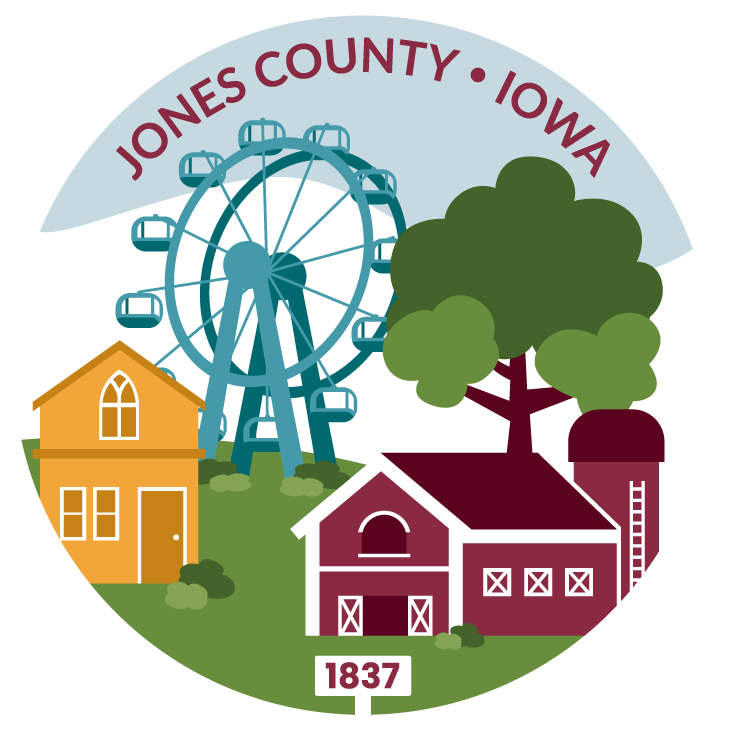GIS
The Jones County GIS Project began in April 2002 when the Jones County Board of Supervisors informally authorized the creation of a GIS Committee consisting of members from the following county departments: Auditor, Assessor, Board of Supervisors, Emergency Management, Engineer and Environmental Health. In August 2004, Jones County selected The Sidwell Company to implement a county-wide GIS with the creation of a cadastral database, aerial photography, different types of districts and agricultural land valuation software. The cadastral database includes data such as parcels, corporate boundaries, roads, water features, subdivisions, township and section lines and much more.
GIS provides a “one stop-shop” where data from each of the county offices can be accessed from a single location! Tasks that previously took hours or days can now be accomplished in a much shorter time frame. GIS also allows high quality images to be printed that are more accurate and easier to interpret than previous records that were maintained by hand.
GIS has already been implemented in several departments for everyday use and/or projects. The potential uses for the Jones County GIS are essentially unlimited. It is a powerful tool, the demand for which will only increase as users see the benefits and possibilities it offers.
What is GIS?
Environmental Services Research Institute, Inc. (ESRI), a worldwide leader in GIS technology and application, defines GIS as “...a collection of computer hardware, software, and geographic data for capturing, managing, analyzing, and displaying all forms of geographically referenced information.”
Unlike a static, unchanging paper map, GIS gives us the ability to constantly update data in an ever changing world. GIS allows us to store a feature’s position on the earth’s surface along with other descriptive information. For example, in addition to a road’s location we can also identify its name, condition, speed limit, etc.
Similar features, such as road centerlines, are grouped together in “layers”. Other layers may include rivers, property lines, land use, zoning districts and even aerial photography. These layers can then be organized on top of one another to create a customized map.
GIS is able to combine different datasets that allow us to view relationships between geographic features. For example, if a city was choosing a location to construct a new park, GIS can combine population data and possible park locations to identify which choice would have the greatest number of residents within walking distance. With this capability GIS can help answer not only where something is located but also why it is located there.
The capabilities of GIS allow it to be of great value to Jones County and its citizens. The data created for the Jones County GIS allows for a seamless view of the county real estate system without needing to flip through and paste together paper maps. Also with its ability to integrate with the tax and assessment systems It can provide a “one-stop-shop” for all the public’s real estate needs.
Phone
319-462-5303
Email
gis@jonescountyiowa.gov
Hours
Please contact for availability
Holiday Closures
Location
Jones County Courthouse
500 W. Main St.
Room 123
Anamosa, IA 52205


